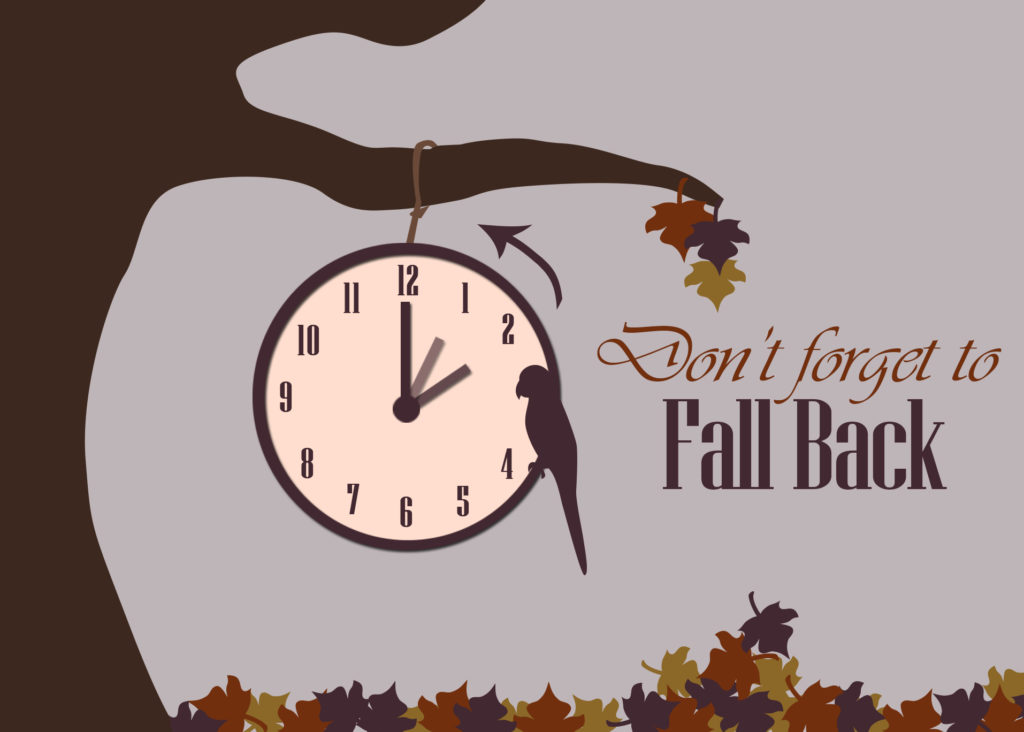Bye-Bye, Daylight Savings Time
It’s that time of year again. Time to set our clocks back an hour as we say goodbye to the last remnants of summer and its lovely, long evenings.

Why must we say goodbye?
Because daylight savings time ended at 2:00 am last night, and before we went to bed we all did the biannual trek around the house, resetting every clock to conform to the agreed-upon time of our particular time zone. The old-fashioned, non “smart” clocks that don’t automatically reset themselves, that is.
The old adage “spring forward, fall back” sure comes in handy when trying to remember which way the time changes, whether you make the switch or not. You see, the changing-the-clocks dance is kind of theoretical for me. Here in Arizona, we rebelliously refuse to comply with DST. Same in Hawaii. Maybe it’s not quite as dramatic as outright rebellion. Arizona and Hawaii have simply opted out – we have plenty of sun year-round. But we do still have to keep track of when everyone else changes.
So Much Controversy
Does This Sound Right?
Daylight savings time is pretty controversial all-around. First of all, is it “savings” or “saving?” According to Wikipedia – who knows everything – the correct term is “daylight saving time.” I’m not sure how, but the incorrect “savings” has become the common usage in the United States, Canada and Australia.
Maybe it would be easier to call it “Summer Time” as it’s called in Europe and other parts of the world. Of course, that could be problematic since we’ve extended the part of the year we observe DST far beyond just the summer months. At this point, we’re “on” more than we’re “off” – nearly eight months of the year.
Anyway, daylight savings is the only way I’ve ever heard anyone say it, and it’s how I’m going to keep saying it. Oh well.
Why Do We?
Should we, or shouldn’t we? Benjamin Franklin originally proposed something like DST in his essay, An Economical Project for Diminishing the Cost of Light He argued that much savings – in the form of candles and lamp oil – could be had if only people would wake earlier to the first morning sun, and go to bed earlier, needing less artificial light. He was kidding, but the idea took off. In 1916, during the first World War, Germany was the first to implement it as a way of conserving coal, and other European countries soon followed suit. The United States adopted it in 1918.
After the war ended, daylight savings was on-again, off-again in the U.S. There were no official rules, and it was up to each city or town whether to remain on the system. Implemented again nationwide during World War II, it wasn’t officially formalized until The Uniform Time Act of 1966. This eliminated a heck of a lot of confusion caused by some cities using it, some not, and different dates being used to spring forward and fall back.
Today we use electricity and other fuels for so much more than just lighting our homes and businesses. Some of these conveniences run 24/7, like refrigerators, air conditioners and furnaces. Whether we now realize any significant overall energy savings from daylight savings time is inconclusive and widely debated. Ah, well – we aren’t going to solve that dispute here.
“Fall Back” to Sleep
Lastly – and our raison d’être – is how DST affects our sleep. Our wonderful bodies, miracles that they are, cannot just turn on a dime. Our built-in circadian rhythms don’t understand, nor do they give a fig about whether we’ve changed our clocks forward or backward. It can take weeks for us to fully adjust.
We feel like we gain an hour when we set our clocks back in the fall, and in the spring we feel we’ve been gifted an hour of useful daylight in the evenings. The hour we “gain” the day we switch off DST, and the hour longer we stay active each day during the daylight savings season, is usually a wakeful hour. This seems like a boon to busy 21st-century people, but we’re losing out when we lose sleep. Even an hour.
It’s not just about feeling tired as we adjust to each time change. There may be real risks to forcing our bodies to conform to what they must perceive as arbitrary shifts. Statistics show increases in heart attacks, miscarriages, automobile accidents and workplace injuries in the days following the shifts, especially the spring forward change.
Surveys, both formal and informal, are regularly conducted to see how Americans feel about daylight savings time. Overwhelmingly, the results show that we don’t quite see the point, and would like very much not to have to change our clocks back and forth. Even so, it doesn’t look like daylight savings will be going away any time soon. So we’ll just keep springing and falling. And doing our best to adjust.
